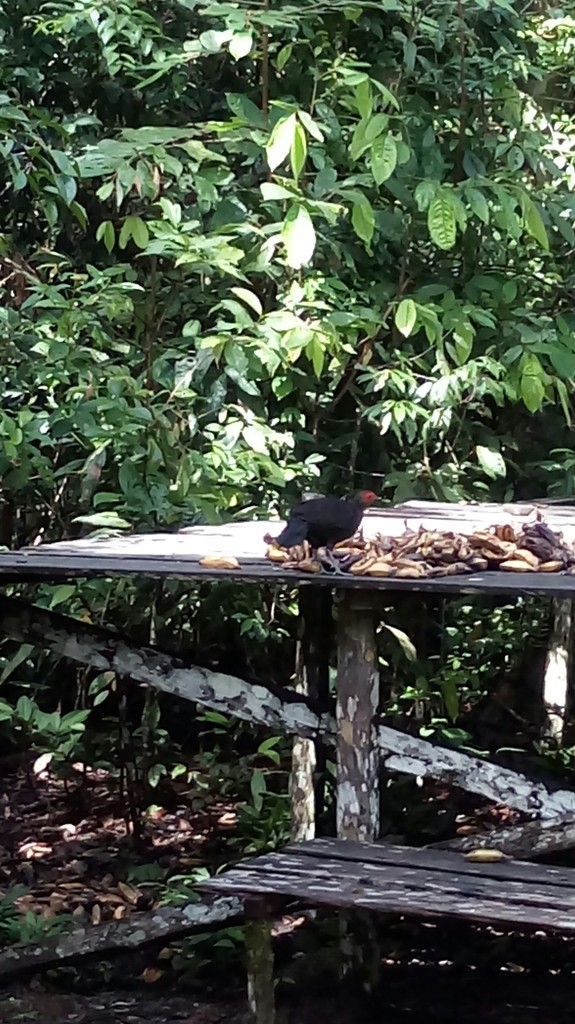Crestless Fireback
A species of Gallopheasants Scientific name : Lophura erythrophthalma Genus : Gallopheasants
Crestless Fireback, A species of Gallopheasants
Botanical name: Lophura erythrophthalma
Genus: Gallopheasants
Content
Description General Info
 Photo By sidmiller , used under CC-BY-NC-4.0 /Cropped and compressed from original
Photo By sidmiller , used under CC-BY-NC-4.0 /Cropped and compressed from original Description
Male crestless firebacks are about 38 cm (15 in) in length and females slightly smaller. The face has bare red skin, the bill is greenish in males and black in females, there is no crest, the legs are bluish-grey, with long spurs in males and short spurs in females. The tail is short and either rounded, or the central feathers are shorter than the outer ones. The male has purplish-black plumage, with white vermiculation on the mantle and back, the wings and the side of the breast. The rump is bright chestnut and the upper tail coverts are purple with maroon margins. The tail feathers are cinnamon with black bases. The female crestless fireback is almost completely black with a blue or green gloss and was for some time considered to be a separate species. The head is brownish, paling to nearly white on the throat. Juveniles resemble females but have pale-edged feathers, and young males develop chestnut rumps quite soon. The female is very similar in appearance to the male Salvadori's pheasant (Lophura inornata) which is endemic to Sumatra, but that species tends to inhabit forests at higher altitudes. 
Size
42 - 50 cm
General Info
Distribution Area
The nominate subspecies L. e. erythrophthalma is found in mainland Malaysia and Sumatra while L. e. pyronota occurs in Borneo. The male of the latter subspecies is a greyer bird, with black and white vermiculations, and steel blue upper tail coverts. The crestless fireback is a shy bird and seldom seen; it inhabits undergrowth in lowland rainforests, and also secondary growth forest in Malaysia, up to altitudes of about 300 m (1,000 ft). 
Species Status
The species is uncommon, with a moderate-sized range and a patchy distribution. Its natural habitat is lowland evergreen virgin forest, including peat forest and karst forest. These habitats are increasingly being cleared and the population of the bird is thought to be decreasing. However, it has also been observed in partially logged secondary forest in both Malaysia and Sumatra, and has been recorded there at densities of six birds per square kilometre. Besides this, some birds live in protected areas of forest. The International Union for Conservation of Nature estimates there may be a total of between ten and twenty thousand mature individuals and has assessed the bird's conservation status as "vulnerable". 